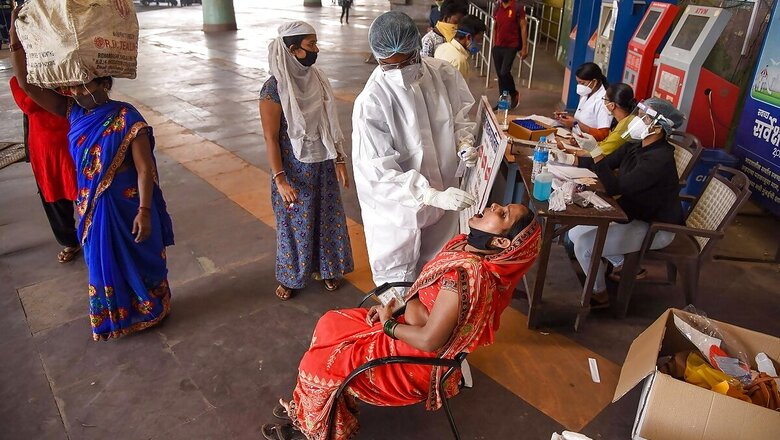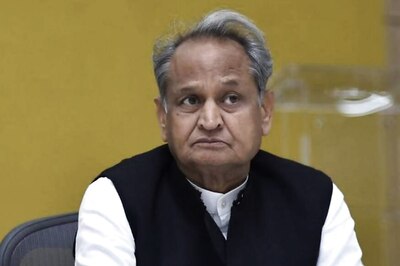
views
This time last year, we were looking at a dreadful virus that had not yet infected many. The prospects were scary, from predictions of millions of dead people to the possibility of an entire senior generation being wiped out. There was no vaccine in sight, and medical research was itself unsure of the epidemiology for COVID-19. One year down the line, we have at least half-a -dozen vaccines rolled out, a death toll that does not reflect the dire predictions made last year and a population that increasingly is weaving its way back to life and liberty, last seen in the pre-COVID era.
The jury is out on what the moral of the COVID-19 story was. On one hand, there is a strong argument that the lockdown checked the wanton spread of a deadly pandemic by restricting travel, gatherings, and physical contact. The death rate was low and the number of new cases came down gradually. On the other hand, there is the argument on economic distresses caused by the lockdown—millions of jobs lost, thousands of factories and workplaces shutting down and consumption demand coming to a screeching halt.
Public health experts have been ambivalent. Some of us argued that a complete lockdown was the only way out, while others advocated partial and localized closures. Now, with the possibility of a second and a third wave rearing its head in Maharashtra, Karnataka and Kerala, those who pushed for a harsh lockdown are making the same arguments again. This time thankfully, there are no takers for a massive countrywide curfew and shutting down of all activity. The solution seems to be a partial containment strategy, barricading of local zones, some travel restrictions and strict enforcement of masks and social distancing in vulnerable areas.
Economic costs of a lockdown
While we are all sanguine about the lockdown reining in the rampaging virus, what we are not sure of is the full extent of the economic impact of the lockdown. What we know is, it resulted in an extreme demand shock. Whenever a disaster strikes, in the form of floods and wars, demand surges and production tends to get maximized. However, in a lockdown, demand comes to a grinding halt and the natural next step is massive closure of units, both in manufacturing and services sector. Private consumption demand, which accounted for nearly 60 per cent of the GDP in pre-COVID times, fell dramatically. By some estimates, this demand dropped by at least Rs 9 lakh crore.
The Lok Sabha was informed recently that more than 10,000 firms closed down voluntarily in the last 12 months, by taking their names off the Registrar of Companies. However, the number of companies that had shut down without following this process could very well be over half a million. This resulted in loss of jobs, with an estimated 80 per cent of the informal urban work force going out of employment for different periods in time. The GDP contraction, as per the advance estimates by the National Statistical Office in January, is going to be 7.7 per cent. In other words, in 2020-21, the economy has shrunk by an estimated Rs 10 lakh crore.
ALSO READ| Vaccinating Kerala: Why We Need to Hurry it Up
The economic loss gets exacerbated by the price that was paid by children and mothers. The closing down of Anganwadi centres, family health clinics and primary schools did result in acute hardship for mothers and children. Domestic violence cases went up significantly. Millions, and we don’t have an exact number yet, of children dropped out of school, probably never to return. And, children who would depend on mid day meals missed out on those. During total lockdown, institutional deliveries saw a sharp fall—the impact of this on newborns is yet to be calculated.
The key learnings
The question many seem to be asking is—Was it the lockdown that resulted in the slowing down of the pandemic and the fall in fatality rates? And, should states witnessing a fresh surge in COVID-19 cases enforce a lockdown to check the spread of the virus?
There are no easy answers to such questions. What we must understand is that the number of deaths due to COVID-19 in India, in absolute terms, is not trivial. With nearly 1.6 lakh deaths, India is the third worst-affected country, behind the US and Brazil. Some of us argue that the mass migration on the back of a total lockdown may have helped the infection spread faster. However, with no benefit of hindsight in March 2020 and a virus that seemed intent on killing as many people as possible, one can also argue that India followed the better example of enforcing a strict lockdown and a series of containment measures (Vietnam followed a similar strategy), with a gradual relaxation in rules.
A year later, we now have learnt that the most appropriate decision-makers for health emergencies are locally elected representatives and the executive. They are best suited to announce shutdowns, containment zones, restrictions and the opening-up schedule. Health issues are essentially local concerns and should be decentralized except for the larger macro concerns on budgetary outlays and large infrastructure spending. The solution, when we see the numbers spike again, as is the case in Maharashtra, is not universal lockdown. Specific, area-wise restrictions, constant testing, tracing and tracking and a large-scale vaccination exercise is what we really need.
Read all the Latest News, Breaking News and Coronavirus News here




















Comments
0 comment